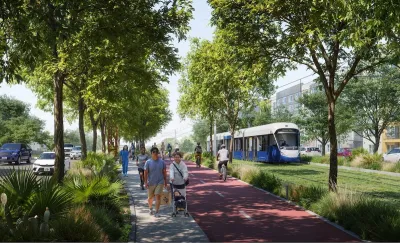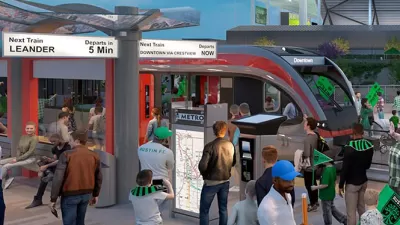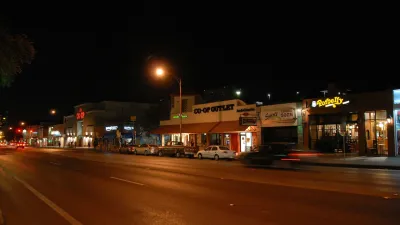The light rail project is moving ahead with plans to finalize its environmental impact review by late 2025.

Despite uncertainty about federal funding and state support, the light rail portion of Austin’s Project Connect is moving ahead, with the Austin Transit Partnership releasing its latest plan for the 9.8-mile transit line. However, as Benton Graham reports in Smart Cities Dive, “The project, which city voters approved in a referendum, faces potential funding and other challenges at the state and federal levels.” Last April, the Texas Attorney General filed a lawsuit against the project, claiming that voters did not approve a revised design.
The latest updates to the plan include an additional station near the state capitol downtown and a bridge over Lady Bird Lake with an elevated station. “The light rail line would have 15 stations that cut north-south through the city’s downtown and turn east after crossing Lady Bird Lake. It also lists priority extension stations further north, south and east, including to Austin Bergstrom International Airport, that it would pursue if funding were to become available.”
If it remains on track, the project could be completed by 2033. Although half of the project was to be financed by federal funding, ATP officials say federal funding freezes will not affect Project Connect’s 2025 timeline, which is funded through a $193 million budget approved in September consisting primarily of taxpayer dollars.
FULL STORY: Austin, Texas, light rail project advances amid political uncertainty

Trump Administration Could Effectively End Housing Voucher Program
Federal officials are eyeing major cuts to the Section 8 program that helps millions of low-income households pay rent.

Planetizen Federal Action Tracker
A weekly monitor of how Trump’s orders and actions are impacting planners and planning in America.

Ken Jennings Launches Transit Web Series
The Jeopardy champ wants you to ride public transit.

Crime Continues to Drop on Philly, San Francisco Transit Systems
SEPTA and BART both saw significant declines in violent crime in the first quarter of 2025.

How South LA Green Spaces Power Community Health and Hope
Green spaces like South L.A. Wetlands Park are helping South Los Angeles residents promote healthy lifestyles, build community, and advocate for improvements that reflect local needs in historically underserved neighborhoods.

Sacramento Plans ‘Quick-Build’ Road Safety Projects
The city wants to accelerate small-scale safety improvements that use low-cost equipment to make an impact at dangerous intersections.
Urban Design for Planners 1: Software Tools
This six-course series explores essential urban design concepts using open source software and equips planners with the tools they need to participate fully in the urban design process.
Planning for Universal Design
Learn the tools for implementing Universal Design in planning regulations.
Heyer Gruel & Associates PA
Ada County Highway District
Institute for Housing and Urban Development Studies (IHS)
City of Grandview
Harvard GSD Executive Education
Toledo-Lucas County Plan Commissions
Salt Lake City
NYU Wagner Graduate School of Public Service





























